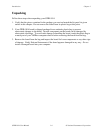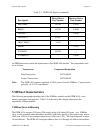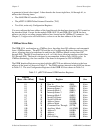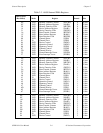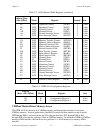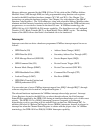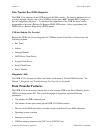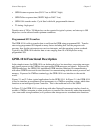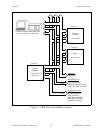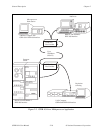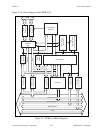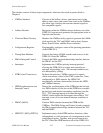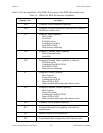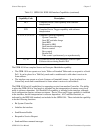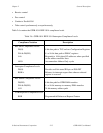General Description Chapter 2
GPIB-1014 User Manual 2-8 © National Instruments Corporation
• GPIB Listener response time (DAV* low to NDAC* high)
• GPIB Talker response time (NRFD* high to DAV* low)
• GPIB-1014 transfer mode: Cycle Steal with hold, programmable timeout
• T1 timing: high-speed
Transfer rates of 250 to 350 kbytes/sec can be expected in typical systems, and rates up to 500
kbytes/sec can be achieved under optimum conditions.
Programmed I/O Transfers
The GPIB-1014 is able to transfer data to and from the GPIB using programmed I/O. Transfer
rates using programmed I/O depend on many factors including how fast the program code
executes, how fast the microprocessor services interrupts, and the operating system overhead.
Typically, the GPIB-1014 transfers data at rates ranging from 10 to 80 kbytes/sec using
programmed I/O.
GPIB-1014 Functional Description
In the simplest terms, the GPIB-1014 can be thought of as a bus translator, converting messages
and signals present on the VMEbus into appropriate GPIB messages and signals. Expressed in
GPIB terminology, the GPIB-1014 implements GPIB interface functions for communicating
with other GPIB devices and device functions for communicating with the central processor and
memory. Expressed in VMEbus terminology, the GPIB-1014 is an interface to the outside
world.
Figures 2-1 and 2-2 show typical applications for the GPIB-1014. In Figure 2-1, the GPIB-1014
is used to interface an assortment of test instruments to a VMEbus computer system, which then
functions as an intelligent System Controller. This is the traditional role of the GPIB.
In Figure 2-2, the GPIB-1014 is used along with other National Instruments interface boards to
connect a VMEbus computer to other processors to transfer files electrically rather than manually
(via a removable storage medium) or to perform other interprocessor communication functions.



